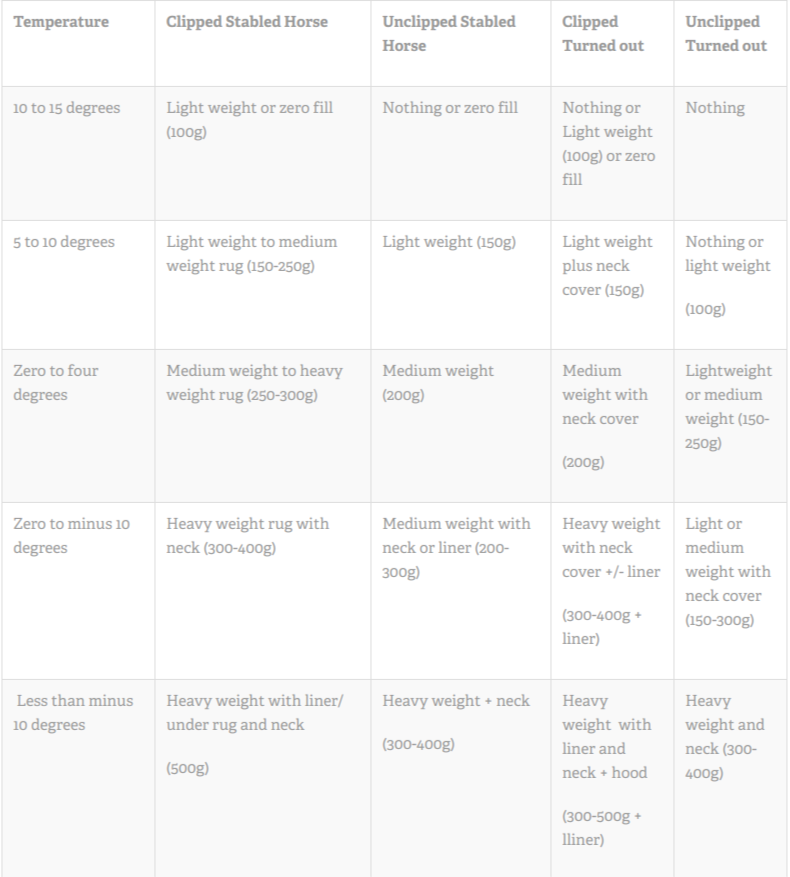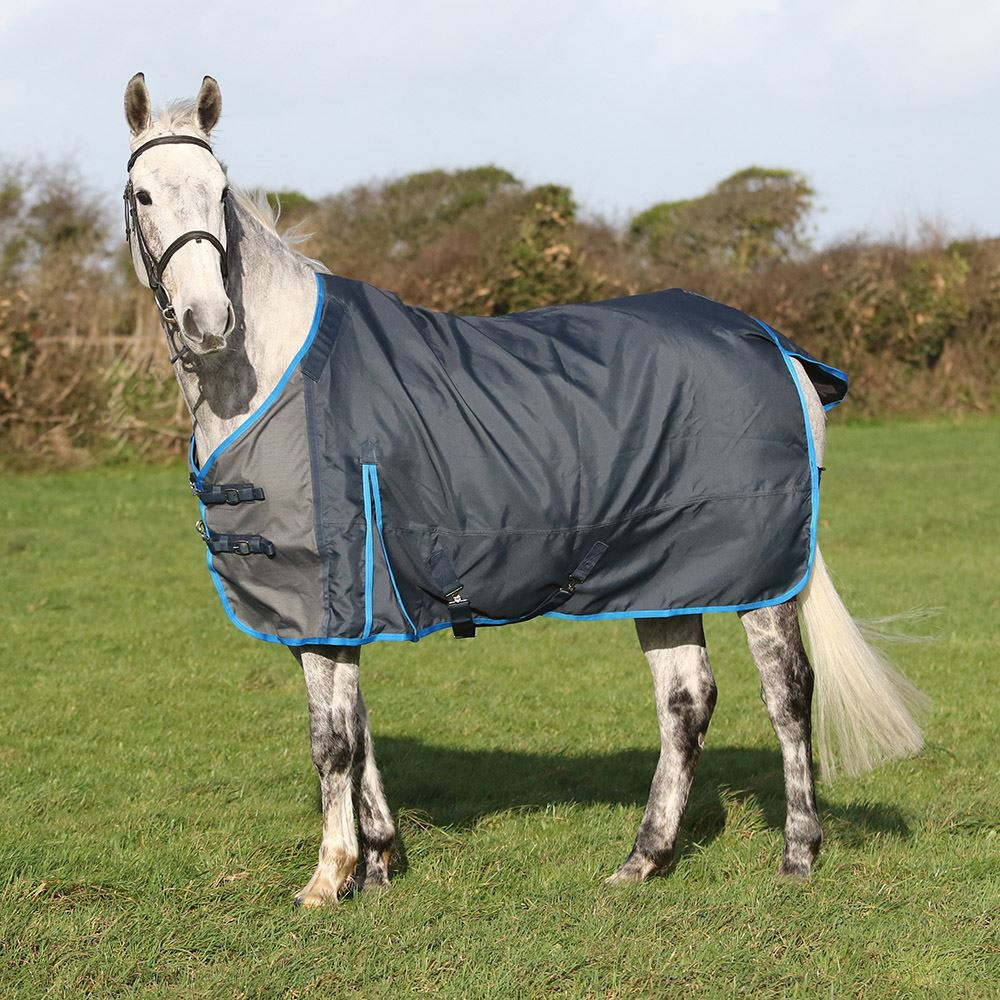It’s that difficult time of year when its warm during the day but going off quite cool at night. This puts us in a difficult situation with management, specifically with regards rugging. We find ourselves grabbing an extra jumper or jacket when we pop to the yard- but does this mean we should start putting some layers on our horses too?
When we feel colder it’s easy to think our horses must be colder and therefore need a rug. However, with the fluctuating temperatures this can lead to horses overheating which causes a short-term welfare issue. In the long term, over-rugging can actually be detrimental to their health- horses naturally loose weight in the winter and this is actually a good thing to reduce their risk of laminitis the following spring.
Horses have evolved to maintain their body temperature through a mechanism called thermoregulation- domestic horses have the same in build mechanism as wild horses! In normal conditions the healthy horse is able to maintain its core body temperature at a static state of approximately 38 degrees, irrespective of the surrounding conditions. Think of the cold nights where your horse has access to a stable/field shelter but chooses to stay out in the wet and wind! When temperatures drop below zero degrees horses are able to divert their blood flow to their internal organs to keep them warm. Therefore assessing how cold your horses’ ears and legs feel is a poor indicator of how warm your horse is!
There are a few things you can do to help your horse thermoregulate to the best of its ability:
Don’t overgroom in the winter months- natural grease in the horse’s coat repels water and prevents the skin getting wet. Over-grooming can remove some of these oils.
Don’t clip if you don’t need to- horses in work during the winter months will need clipping to prevent them sweating excessively. However horses which are not in work will be able to make use of their winter coat to keep warm. Unclipped horses are unlikely to need rugging until the temperature creeps towards freezing.
Provide constant access to forage- horses are hind gut digesters and this process generates heat which a horse can use to keep itself warm (effectively a personal radiator). This only works if it is able to feed almost constantly on a fibre based diet.
Movement can help generate heat from muscle contraction so reducing time stood still in a stable can help horses keep warm.
Allow assess to shelter if turned out 24/7
Spring and Autumn are key times when a horse changes his coat and adapts- over-rugging during this period can affect their ability to regulate themselves for the rest of the season and they are less likely to grow a warm natural coat.
If your horse is wet use a wicking rug until it is dry. If you apply a night rug to a wet horse and leave it, the rug will absorb the moister and hold it close to the horse’s body for many hours.
Over-rugging can affect this natural thermoregulation and can also become a welfare issue is the horse over heats.
On a yard it can be easy to feel pressured into doing what others are doing especially with rugging- but remember horses are all individuals- certain conditions may mean some horses need rugging more then others and visa versa. For example an old thoroughbred may benefit from wearing a rug in conditions where it would not be necessary to rug an overweight welsh mountain pony. Using your horses’ weight and body condition score as a guide is much better then determining how cold you feel in the morning.
I have put together a handy chart to help you decide which rug to reach for. However, it is only meant as a guide. As mentioned earlier all horses are individuals so get to know your horse and don’t feel pressured into doing the same as others on your yard! It is important to note the type of clip will effect the type of rug required. For example, a horse with a trace or blanket clip will need a lighter weight rug compared to a horse with a full hunter clip. Please also remember to reduce rugs as the temperature rises during the day!

I hope this has been helpful and given you some food for thought when next at the yard having a rugging dilemma. Remember if your horse is in good body condition its likely to be fine un-rugged during these autumnal nights.
Anna

